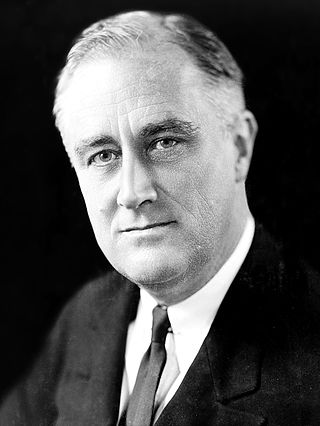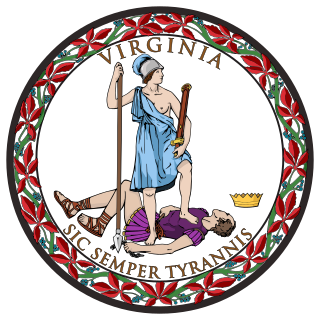
The 1928 United States presidential election was the 36th quadrennial presidential election, held on Tuesday, November 6, 1928. Republican former Secretary of Commerce Herbert Hoover defeated the Democratic nominee, Governor Al Smith of New York. After President Calvin Coolidge declined to seek reelection, Hoover emerged as his party's frontrunner. As Hoover's party opponents failed to unite around a candidate, Hoover received a large majority of the vote at the 1928 Republican National Convention. The strong state of the economy discouraged some Democrats from running, and Smith was nominated on the first ballot of the 1928 Democratic National Convention. Hoover and Smith had been widely known as potential presidential candidates long before the 1928 campaign, and both were generally regarded as outstanding leaders. Both were newcomers to the presidential race and presented in their person and record an appeal of unknown potency to the electorate. Both faced serious discontent within their respective parties' membership, and both lacked the wholehearted support of their parties' organization.

The 1932 United States presidential election was the 37th quadrennial presidential election, held on Tuesday, November 8, 1932. The election took place against the backdrop of the Great Depression. The incumbent Republican President Herbert Hoover was defeated in a landslide by Democrat Franklin D. Roosevelt, the governor of New York and the vice presidential nominee of the 1920 presidential election. Roosevelt was the first Democrat in 80 years to simultaneously win an outright majority of the electoral college and popular vote, a feat last accomplished by Franklin Pierce in 1852, as well as the first Democrat in 56 years to win a majority of the popular vote, which was last achieved by Samuel J. Tilden in 1876. Roosevelt was the last sitting governor to be elected president until Bill Clinton in 1992. Hoover became the first incumbent president to lose an election to another term since William Howard Taft in 1912, and the last to do so until Gerald Ford lost 44 years later. The election marked the effective end of the Fourth Party System, which had been dominated by Republicans. It was the first time since 1916 that a Democrat was elected president.

Norman Stanley Case was an American politician who served as the Lieutenant Governor of Rhode Island from 1927 to 1928 and the 55th Governor of Rhode Island from 1928 to 1933. He also served in the Army during World War I and was the U.S. District Attorney for Rhode Island from 1921 to 1926. Case was a member of the Republican Party during his entire time in office. He was a member of the General Society of Mayflower Descendants. He was also an active member of the Freemasons and was a Baptist. He died on October 9, 1967, in Wakefield, Rhode Island, two days shy of his 79th birthday.

The 1932 United States presidential election in New York took place on November 8, 1932. All contemporary 48 states were part of the 1932 United States presidential election. Voters chose 47 electors to the Electoral College, which selected the president and vice president.

The 1928 United States presidential election in New York took place on November 6, 1928. All contemporary 48 states were part of the 1928 United States presidential election. State voters chose 45 electors to the Electoral College, which selected the president and vice president.

The 1932 United States presidential election in Massachusetts took place on November 8, 1932, as part of the 1932 United States presidential election, which was held throughout all contemporary 48 states. Voters chose 17 representatives, or electors to the Electoral College, who voted for president and vice president.

The 1928 United States presidential election in Massachusetts took place on November 6, 1928, as part of the 1928 United States presidential election, which was held throughout all contemporary 48 states. Voters chose 18 representatives, or electors to the Electoral College, who voted for president and vice president.

The 1926 United States Senate election in Illinois took place on November 2, 1926.

The 1928 United States presidential election in New Jersey took place on November 6, 1928. All contemporary 48 states were part of the 1928 United States presidential election. Voters chose 14 electors to the Electoral College, which selected the president and vice president.
Stephen R. Archambault is an American politician currently serving as a member of the Rhode Island Senate from District 22. Archambault was a Democratic candidate for Attorney General of Rhode Island in 2010.

The 1952 United States presidential election in Virginia took place on November 4, 1952. Voters chose twelve representatives, or electors to the Electoral College, who voted for president and vice president.

The 1924 United States presidential election in Florida was held on November 4, 1924. Voters chose six representatives, or electors to the Electoral College, who voted for president and vice president.

The 1948 United States presidential election in North Carolina took place on November 2, 1948, as part of the 1948 United States presidential election. North Carolina voters chose 14 representatives, or electors, to the Electoral College, who voted for president and vice president.

The 1928 United States presidential election in Delaware took place on November 6, 1928. All contemporary 48 states were part of the 1928 United States presidential election. State voters chose three electors to the Electoral College, which selected the president and vice president.

The 1928 Massachusetts gubernatorial election was held on November 6, 1928.

The 1938 Massachusetts gubernatorial election was held on November 8, 1938.

The 1932 Rhode Island gubernatorial election was held on November 8, 1932. Democratic nominee Theodore F. Green defeated incumbent Republican Norman S. Case with 55.20% of the vote.

The 1930 Rhode Island gubernatorial election was held on November 4, 1930. Incumbent Republican Norman S. Case defeated Democratic nominee Theodore F. Green with 50.53% of the vote.

The 1918 Rhode Island gubernatorial election was held on November 5, 1918. Incumbent Republican Robert Livingston Beeckman defeated Democratic nominee Alberic A. Archambault with 53.11% of the vote.

The 1906 Iowa gubernatorial election was held on November 6, 1906. Incumbent Republican Albert B. Cummins defeated Democratic nominee Claude R. Porter with 50.18% of the vote.





















